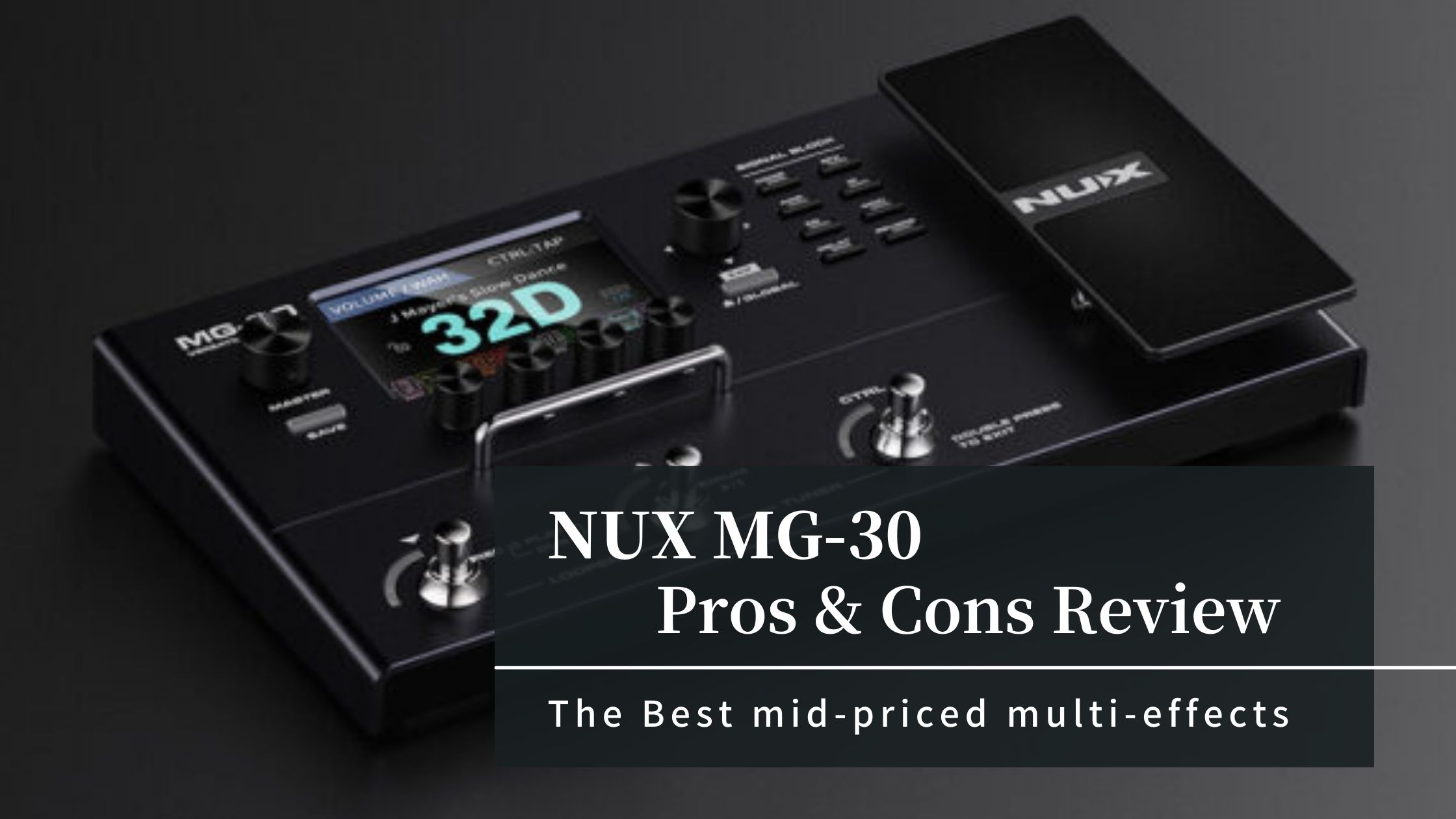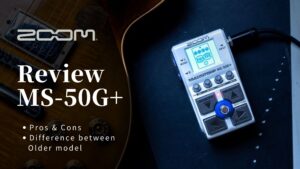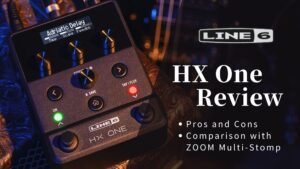NUX MG-30 is a standout multi-effects, offering high-end sound quality at a mid-range price. Designed for those upgrading from beginner setups or seeking enhanced home recording quality, it boasts features like a 32-bit AD/DA converter, 80 select effects, and a user-friendly color display. However, while it excels in studio settings, its design might be less suited for live performances. With a market price of around $300, it's a top choice for quality-conscious musicians on a budget.
For those:
● Looking to upgrade from beginner effects
● Wanting to improve the sound quality of home practice and DTM recording
● Not willing to spend $1,000 on a multi-effect
Yosh, an ex-musical instrument store clerk (@Yosh_Guitar), reviews the popular mid-priced multi-effects NUX MG-30.
Pros of NUX MG-30
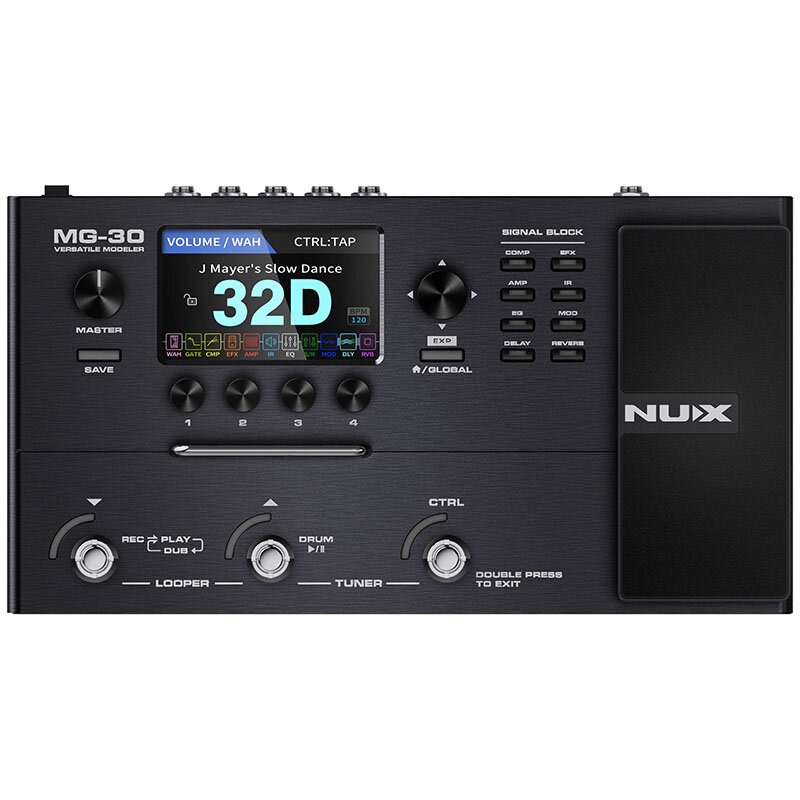
①: Equipped with 2 DSPs and a 32-bit AD/DA converter
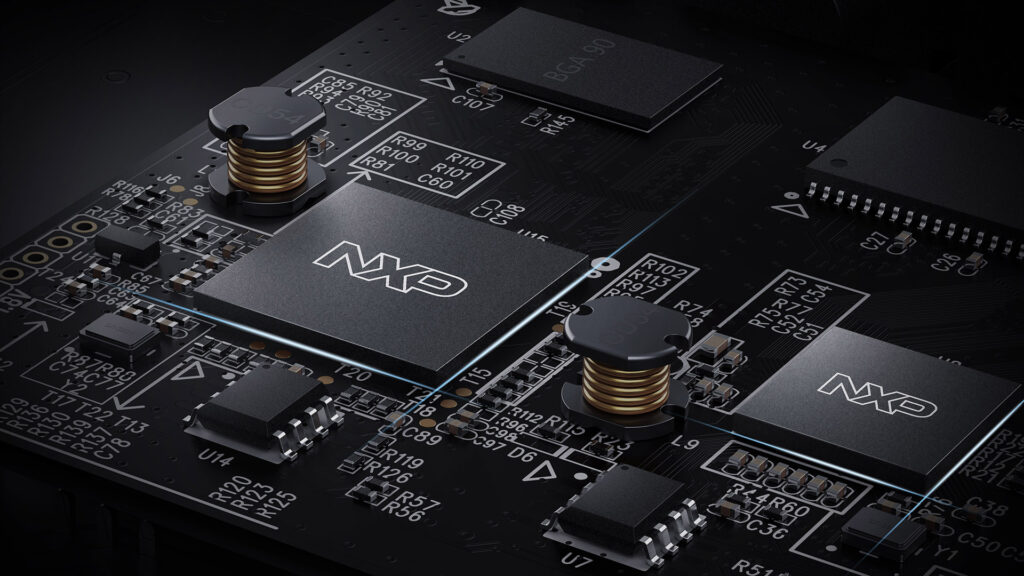
Despite its price range of $300, it achieves low latency and low noise through high-end model-like computational processing. Many traditional effects are 24-bit. Higher specs don’t always mean better, but it’s mentally satisfying. In terms of sound, it’s comparable to high-end devices, with some user reviews even claiming it’s better than Kemper or Line6.
②: A selection of 80 effects
It includes amp modeling (25 for guitar, 3 for bass, 2 for acoustic), effects (12 drive types, 3 compressors, 13 modulations, 7 delays, 5 reverbs, 5 wah pedals), 4 types of equalizers, and a noise gate. Compared to other recent multi-effects, the variety is somewhat limited. This is because Nux prioritized the quality of each effect over quantity. On the other hand, there are 8 types of guitar cabinets, 8 bass cabinets, 3 acoustics, and you can choose from 8 types of microphones and 3 distances. It also supports third-party IRs. The list of built-in effects is summarized in this article at the last.
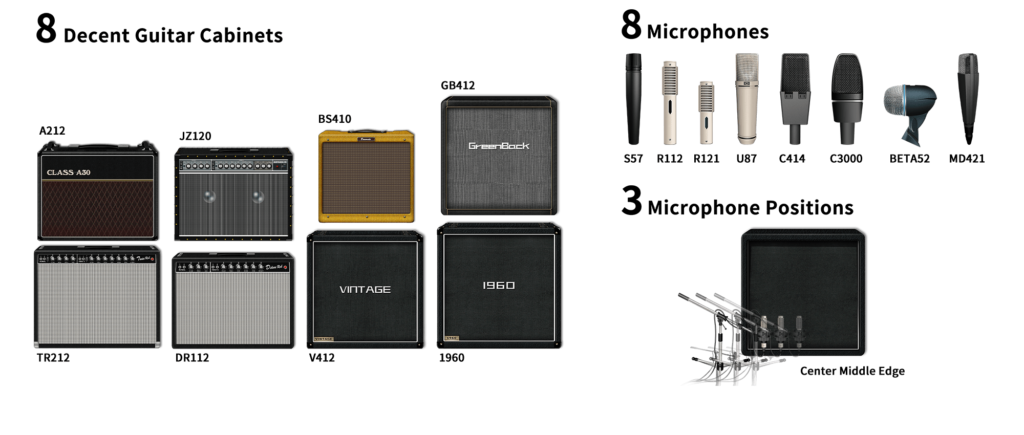
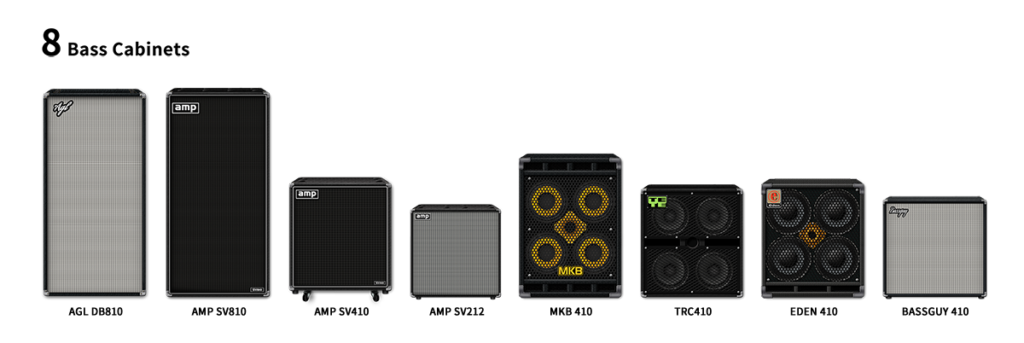
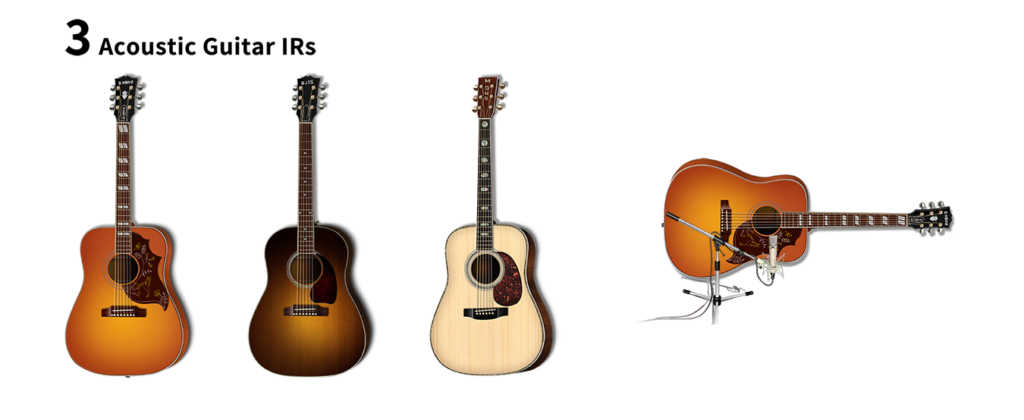
③: Equipped with send/return terminals

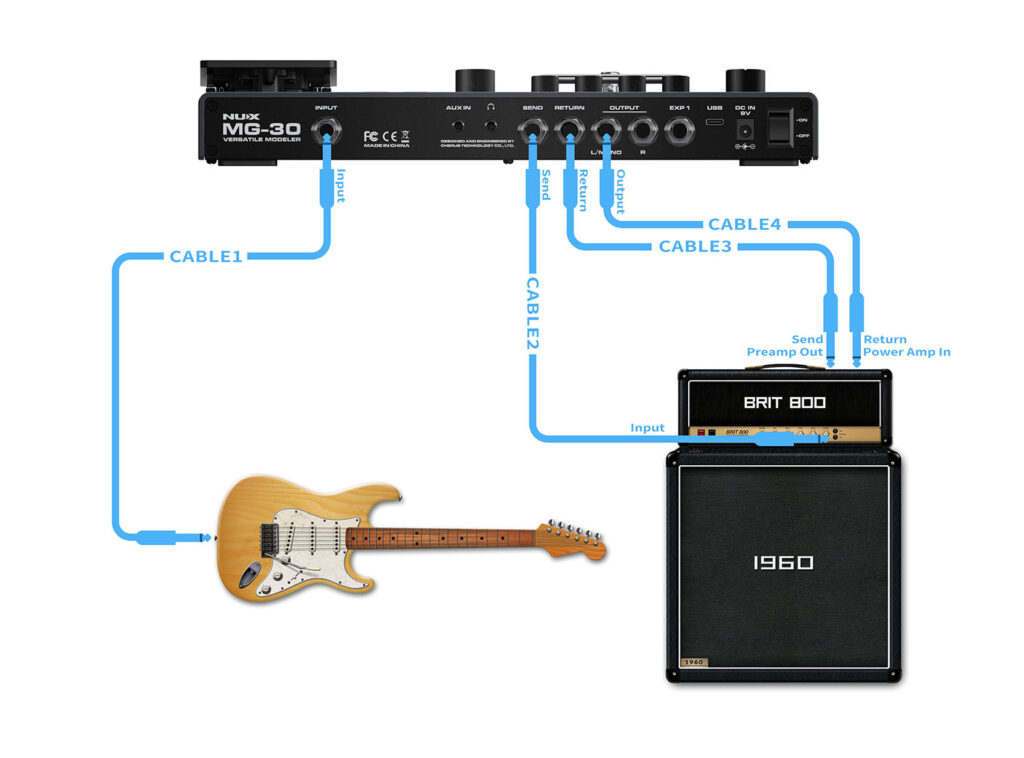
Uncommon for multi-effects of this size, it’s equipped with send/return terminals. You can set the send/return at any position within a patch. This allows for methods like the 4-cable method, where you apply the MG-30’s ambient effects after the distortion of a tube amp, or integrate your favorite compact pedal into the MG-30’s routing.
④: User-friendly color display
With a 4-inch large color display, a 5-WAY DIRECTION ENCODER knob, 4 other knobs, and various buttons, operations are intuitive. The images displayed on the color screen, representing the modeled source, are quite direct and easy to understand, facilitating smooth sound creation.
⑤: Built-in rhythm machine + looper
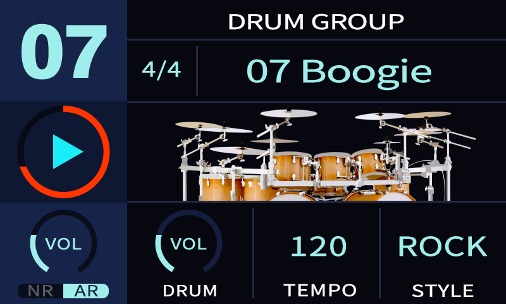
Equipped with 67 drum track patterns and a 60-second looper. They can be used simultaneously, with the up foot-switch controlling the looper and the down foot-switch controlling the rhythm machine. The 60-second simple looper is more suitable for practicing improvisation than for live performance.
Rhythm pattern genres and types are as follows:
- Rock: 7 types
- Country: 7 types
- Blues: 6 types
- Metal: 7 types
- Funk: 7 types
- Jazz: 7 types
- Ballad: 7 types
- Pop: 8 types
- Reggae: 6 types
- Electro: 5 types.
⑥: Headphone/AUX IN terminal convenient for home practice
By connecting headphones, you can practice safely in apartment buildings or at night. You can enjoy a realistic amp sound using the IR cabinet simulator. You can also play while streaming music from an external source.
⑦: Edit software and audio interface function via USB connection
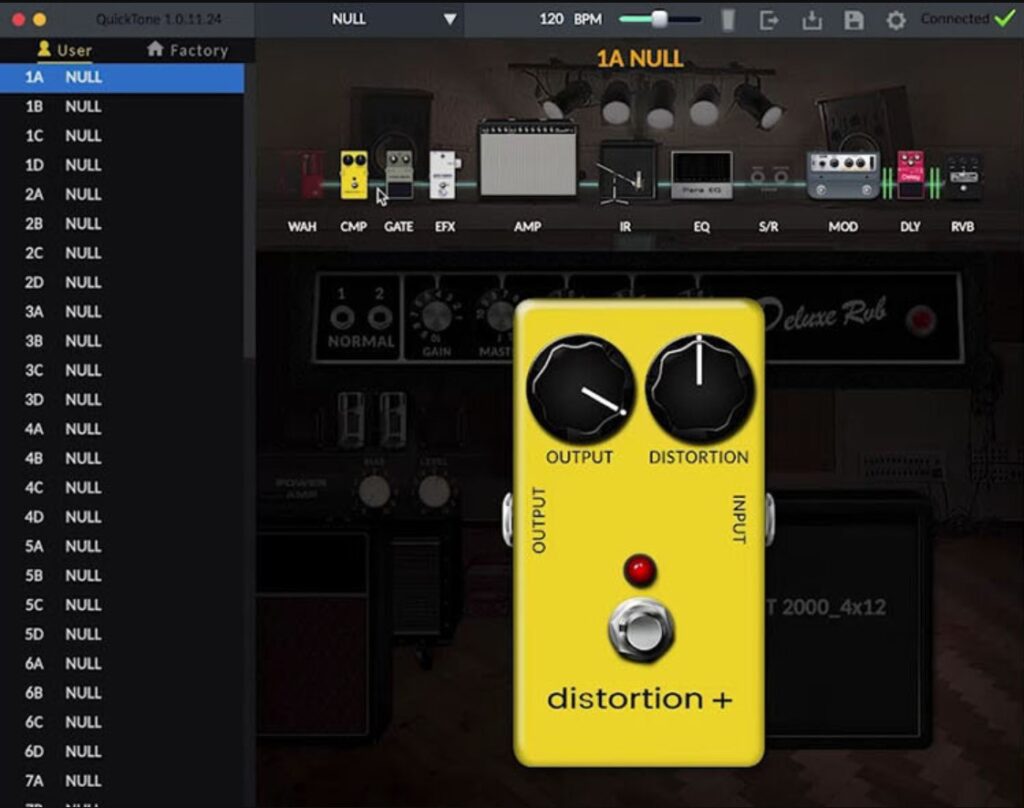
With a Type-C USB connection, you can use the PC editor software “QuickTone Editor” to edit patches. It’s even more user-friendly than just using the device. It also has an audio interface function. You can record with a sound that has the feel of an amp cabinet’s resonance even on a line. It also includes IR for acoustic guitars, so you can achieve excellent recording by connecting an acoustic-electric guitar.
Cons of NUX MG-30
①: No special effects
While multi-effects typically include effects beyond basic ones like distortion and ambient effects, the Nux MG-30 does not include special effects like pitch shifters or synthesizers. However, it does include enough effects for basic sound creation, so this may not be an issue for many. If you want to use special effects, a simple solution is to connect compact multi-effects like ZOOM MS-50G to the send/return.
②: Limited bass effects
The concept of the MG-30 prioritizes the quality of each sound over the quantity. There are only 3 types of amp modeling for bass. Also, while other bass multi-effects include popular models like Darkglass preamps or EBS multi-comps, the MG-30 does not model bass effectors. It’s useful for guitarists who want to record bass for demos or songwriting.
③: Not ideal for live use
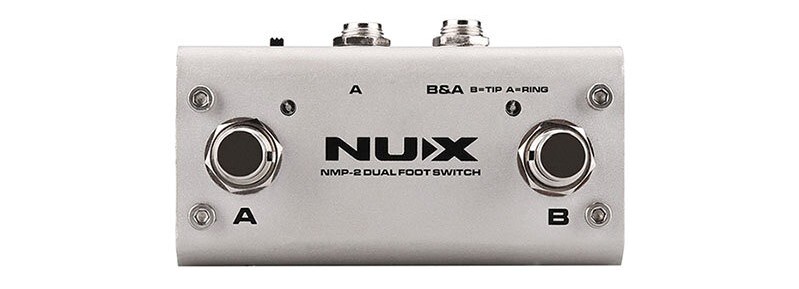
The device’s foot-switches include up and down for patch changes, and CTRL for turning effects on/off or setting the tap tempo, the same configuration as the BOSS GT-1. This makes it somewhat unsuitable for switching between various tones during a song. However, there’s a provision for adding two more CTRL switches with the included foot switch (NMP-2). Still, these are quite compact and may be a bit inconvenient to use without mistakes. The sound quality on the line is excellent, so it’s a non-issue if you mainly use it at home or in the studio.
NUX MG-30 Effects List Overview
COMPRESSOR
- ROSE COMP: ROSS COMPRESSOR
- K COMP: KEELY COMPRESSOR
- STUDIO COMP: STUDIO COMPRESSOR
WAH
- CLYDE: CLYDE (60’s TRUMPET SOUND)
- CRY BB: CRY BABY
- V847: VOX 847 WAH
- HORSE WAH: MORLEY BAD HORSIE WAH
- OCTAVE SHIFT: DIGITECH WHAMMY
PRE EFX (Distortion)
- DISTORTION+: MXR DISTORTION+
- RC BOOST: Xotic RC BOOSTER
- AC BOOST: Xotic AC BOOSTER
- DIST ONE: BOSS DS-1 DISTORTION
- T SCREAM: Ibanez TUBE SCREAMER
- MORNING DRV: JHS Morning Glory
- EAT DIST: Pro Co RAT
- RED DIRT: KEELY RED DIRT
- CRUNCH: JHS Angry Charlie
- MUFF FUZZ: Electro-Harmonix Big Muff Pi
- KATANA: KEELY KATANA CLEAN BOOST
AMP
- JAZZ CLEAN: Roland JC-120
- DELUXE RVB: ’64 Fender Deluxe Reverb
- BASS MATE: ’59 Fender Bassman
- TWEEDY: ’57 Fender Tweed Deluxe
- TWIN RVB: ’65 Fender Twin Reverb
- HIWIRE: 1969 HIWATT
- CALI CRUNCH: 1978 Mesa Boogie MK1
- CLASS A 15: VOX AC15
- CLASS A 30: VOX AC30
- PLEXI 100W: ’68 Marshall Plexi 100W
- PLEXI 45: ’67 Marshall Plexi 45W
- BRIT 800: 1977 Marshall JCM800
- 1987 X 50W: 1989 Marshall 1987X 50W
- SLO 100: 1980 Soldano SLO 100
- FIREMAN HBE: 2005 Friedman HBE
- DUAL RECT: 1985 Mesa Dual Rectifier
- DIE VH4: 1999 Diezel VH4
- VIBRO KING: 1990 Fender Vibro King
- BUDDA: BUDDA
- MR Z 38: 2001 FR Z MAZ 38
- SUPER RVB: 2008 Fender Supersonic
- BRIT BLUES: 1967 Marshall JTM45
- MATCH: 1986 Matchless DC30
- BRIT 2000: Marshall JTM2000
- UBER: Bognar Uberschall
- AGL: AGL AMP
- BASSGUY: BASSMAN 100
- MLD: MLD AMP
- OPTIMA AIR: OPTIMA AIR
- STAGEMAN: STAGEMAN ACOUSTIC
IMPULSE RESPONSE (IR)
- JZ: Roland JC120
- DR112: ’64 Deluxe Reverb
- BS410: ’59 Bassman
- A212: VOX AC30
- TR212: ’65 Twin Reverb
- 1960: Mashall 4 x 12
- GB412: Marshall Greenback 4 x 12
- V412: Marshall Vintage30 4 x 12
- AGL DB810: AGL 8×10
- AMP SV810: Ampeg SVT 8×10
- AMP SV410: Ampeg SVT 4×10
- AMP SV212: Ampeg SVT 2×12
- MKB 410: Markbass 4×10
- TRC 410: Trace Elliot 4×10
- BASSGUY 410: Fender Bassman 4×10
- M-D45: Martin D-45 (Acoustic)
- G-HBIRD: Gibson Hummingbird (Acoustic)
- G-J15: Gibson J-15 (Acoustic)
- USER IR CAB: USER IR CAB
EQ
- 6-BAND EQ: BOSS GE-6
- ALIGN EQ: ALIGN EQ
- 10-BAND EQ: MXR 10 BAND
- PARA EQ: ALIGN EQ
FX LOOP S/R (Send/Return Terminal)
- SEND/RETURN: SEND / RETURN
GATE
- NOISE GATE: NOISE GATE
MODULATION
- CE-1: Roland CE-1 Chorus
- CE-2: BOSS CE-2 Chorus
- STEREO CHORUS: MXR Stereo Chorus
- VIBRATOR: BOSS VB-2 Vibrato
- DETUNE: Stereo DETUNE
- FLANGER: BOSS BF-2 Flanger
- PH 90: MXR PHASE 90
- PHASE 100: MXR PHASE 100
- S.C.F.: TC CHORUS
- U-VIBE: Dunlop Uni Vibe
- TREMOLO: BOSS TR-3 TREMOLO
- RTY SPK: ROTARY SPEAKER
- HARMONY: MXR HARMONIZER
DELAY
- ANALOG DELAY: BOSS DM-2 Analog Delay
- DIGI DELAY: BOSS DD-2 Digital Delay
- MODULATION: Ibanez DML Modulation Delay
- TAPE ECHO: Maestro EchoPlex EP-4
- REVERSE DELAY: BOSS DD-8 Reverse Delay
- PAN DELAY: Ibanez DPL10 Stereo Pan Delay
- DUOTIME: NUX DUOTIME
REVERB
- ROOM: T-Rex Room Mate Reverb
- HALL: Lexicon 224 Hall Reverb
- PLATE: EMT 140 Plate Reverb
- SPRING: Vintage Spring Reverb
- SHIMMER: SHIMMER REVERB
Conclusion
With a market price is $299, this popular multi-effects offers high-end sound quality at a mid-range price. It’s a product that matches well with purposes like line recording or as a sub-board. It’s ideal for those:
- Dissatisfied with cheap multi-effects
- Not willing to spend $1,000 on a multi-effects
- Already have a main effect board and want a sub one for easy-to-carry
- Want to mainly use it for home practice or line recording.

